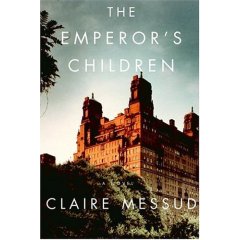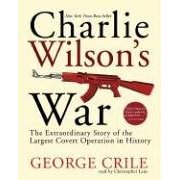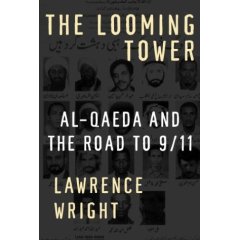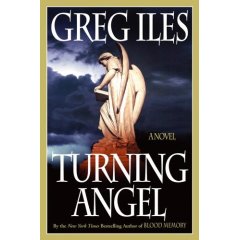“The Emperor’s Children” by Claire Messud, which I’m still reading and can’t tell you about–except that I love it so far–didn’t make the cut from the longlist to the shortlist of the British Man Booker Award–which is akin to the American Academy Awards–well, sort of. My impression is that the judges just don’t like America–the author Claire Messud lives in Massachusetts. You have to have ties to England and/or the old British colonies to be in the running. I’m telling you, this is a great book.
Two Books Cover 20 Years Of Convoluted Relations Between CIA/FBI & Muslim Radicals
After reading the last riveting page of âThe Looming Towerâ? [Knopf: 2006] by The New Yorker staff writer Lawrence Wright, something tugged at my memory. One of those annoying nudges that wonât let goâso I was relieved when I remembered it was a book I had read a few years earlier.
That book was called âCharlie Wilsonâs Warâ? [Atlantic Monthly Press: 2003] written by veteran 60 Minutes Producer George Crile. (I have since learned that Charlie Wilsonâs War is going to be a major motion picture, starring Tom Hanks, with a release date of 2007. I donât know if the fact that Hollywood is weighing in diminishes my little book review but I thought I should tell you that).
“Charlie Wilsonâs War” and “The Looming Tower” should be read together. They are parts of a whole or maybe a partial whole if such a concept exists.
“Charlie Wilsonâs War” tells the truly incredible story of a womanizing, hard drinking, partying US Congressman and the huge role he played in âthe CIAâs secret war in Afghanistanâ?. That congressman was Charlie Wilsonâand this very tall Texan with a booming voice became enthralled with the idea of the colorful mujahideen, who, armed with ancient weapons, risked their lives to fight off the Soviet superpower that had invaded their country in the 1980s.
See why it has all the makings for a movie with Tom Hanks?
Wilson sat on the powerful Defense Appropriations subcommittee and with one phone call was able to increase funding to the mujahideen but a great deal more money was needed and thatâs where the CIA comes in. At the time, according to author George Crile, the CIA was backing anti-communist causes in Central America, like the Contrasâin fact, until Wilson convinced them to focus on Afghanistan instead, the CIA believed Central America was the focal point of the Cold War.
Once on board, the CIA came to believe that Afghanistan was an excellent project for them– and by focusing on the mujahideen, the Muslims might forgive the US for having supported the Shah of Iran and, of course, continued support for Israel.
Wilsonâs influence and role is so big that when the Soviets are booted out of Afghanistan and the Cold War is officially declared dead, the 6â8â? Texan was honored at CIA headquartersâ a hallowed place where outsiders are rarely welcomed.
While Crileâs book echoes the role of the CIA in Afghanistan, Lawrence Wrightâs “The Looming Tower”* talks about the rise of radical Islam and gives a lot of credit to the FBI for their anti-terrorism activites.
Most intriguing is the description of the Egyptian educator Sayid Qutb, who attends a university in the American Mid-West, appears to like the school and the people, when he actually despises everything about what he views as the superficiality of American culture. After leaving the US and returning home to Egypt, Qutb becomes famous as an intellectual writing about what later became well known as Islamic Fundamentalism. His work attracted many followers, who in turn became more and more radicalizedâfinally interpreting as moral, the killing of anyone who is not a true Muslim, the present definition of a Muslim terrorist.
Given an understanding of the roots of modern Islam, the author Lawrence Wright moves on to terrorist bombings including two American consulates in Africa, the bombing of the Cole, the ultra modern naval vessel that was refueling in Yemen, and the 1993 bombing of the Twin Towers.
These events bring in John OâNeill, the FBI chief of counter terrorism and his futile attempts to find and charge all of the major terrorist culprits.
(John OâNeill and Charlie Wilson share many personal traits: both were larger-than-life characters, womanizers, spending more money than either had.)
Author Lawrence Wright makes it clear that the FBIâs John OâNeillâs efforts are continually frustrated by the CIA– by the wall of silence that falls between the FBI and this other powerful spy agency. OâNeill, after resigning from the FBI, went on head up security in the Twin Towers where, ironically, he died on 9/ll.
*I have just learned that ABC-TV will be airing “The Path to 9/11” a miniseries, with Harvey Keitel starring as FBI counter terrorism chief John O’Neill.
New Stamps: Author Katherine Anne Porter (1890-1980)
Page Turner: Turning Angel
I’d never read Greg Iles before but his latest, Turning Angel, has me riveted. Entertaining and a real page turner. Iles is a thoughtful, compelling writer who does a great job of dangling several murder suspects before the reader’s eyes– and he shocks some of us with his knowledge about the behavior of today’s teenagers. In the “deep” of the book, the author tells us about the “turning angel”, featured on the cover. The book’s location in Natchez, Miss. takes the reader to a place far from Northern California.
Limits of Enchantment
Fern, assistant to an eccentric midwife, is “just gone” when she hears the heartbeat of an unborn baby; she is “just gone” when she walks through the forest, letting in all the natural sounds and smells, sensualsations that transport her somewhere we’d all like to be. You’d think from my description of Fern, the main character of Graham Joyce’s latest book, “The Limits of Enchantment’, that she was smoking something, but although the book is set in the 1960s– and will bring any of you who lived through and enjoyed that magical era back to front center–Fern is not a hippie. She’s an original character, one we can learn much from.
This is the first Graham Joyce book I’ve ever read, the first time I’ve read this style of storytelling, and it’s been pure joy. Joyce’s book was also longlisted for this year’s coveted Man Booker Prize.
Update: Patricia Cornwell’s “Predator” & A Personal Note
I’m almost finished with Patricia Cornwell’s latest book, "Predator," and, I know, I know I complained about the work in an earlier post. But after I got through that rough spot the book turned into a real page-turner, a gory page-turner, you just can’t take that stuff seriously. I don’t let the gory stuff penetrate…I must have missed one of her earlier books because her niece, Lucy, and former cop-now "co-worker", Marino, sure have gone through some serious personality changes. Cornwell also has former FBI man Benton bitterly complain about how the effect of the Patriot Act on personal privacy.
Do you remember when President Clinton was defending himself from yet another womanizing charge–I forget her name, she was doing volunteer work, fundraising, her husband had committed suicide because he was bankrupt, and she said she told Clinton and he touched her improperly. Remember? She even went on 60 minutes with her charges.
In the heat of all this embarrassment Clinton said something like: go ask Patricia Cornwell, down in Virginia ask her what people think (of this woman who was bringing charges against the President).
In Cornwell’s new book, one evil character wears a hood, and that could be what put me off.
I remember a frightening incident, the first time such a thing had happened to me, oh, in the early 1980s. I was working for a little over-the-hill newspaper, free-lancing, and I was assigned to do a story on a few bars with character, historic. I took a girlfriend with me. As I recall there was a cowboy bar on Canada Road in Woodside and another on Skyline.
And then around 10 p.m. we headed over Highway 92, back home to the Coastside. I was driving and I intended to drop my friend off at her home in Half Moon Bay when I looked in the rear view mirror and told her: "I think we’re being followed."
I wasn’t sure; I’d never been followed before.
"That car’s still there. I’m not taking you home."
I decided to drive to El Granada; I was looking for police.
My friend said, "Why don’t you go to the ‘quick stop’. There’s a phone there." 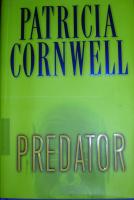
The ‘quick stop’, that’s what we called it, was open ’til midnight and all lit up and outside there was a phone booth (an almost extinct species now).
It was dark driving along the road paralleling Highway 1, and nobody else was around, and when I looked in the rearview mirror, the car was still there, not sitting on my bumper, back back a few car-lengths. But now instead of it just being a car and not being able to see anything but the car, there was a frightening change—the man, it must have been a man, had turned the interior light on and had covered his head with a hood!
I don’t remember if I screamed but I knew I was close to the "quick-stop" and the lights and the phone and that gave me confidence. The man in the car behind us must not have known. Had he followed us from one of the bars we visited? He must have!
Seconds later I saw the lights, we were safe (and the car that had followed us vanished back into the darkness). I ran to the phone and called the police and they came right away and they followed my car as I took my friend home and they followed me home and said they would be checking my house all night long. Which the police did, shining a search light on my house every so many minutes.
The Singularity
The Singularity is one of those mind-boggling things. I understand it but I can’t explain it clearly. It’s like you’re standing at the Apple Store counter, the clerk just took your money for the most up-to-date, latest IPOD and the new, latest up-to-date IPOD appears right then at that very moment. It’s like change is….
Am I getting that right? Close?
There’s nothing but change. Change takes on a whole new meaning, there’s no time in beween change. My example was a technological one-but what if EVERYTHING is changing as it’s changing.
Whew! Please.
I can’t remember where I first read about “the singularity” but there is a new book out by Ray Kurzweil called “The Singularity is Near”. I believe Kurzweil invented a reading machine for the legally blind, it enlarges (really big) book and magazine and newspaper print. Pretty cool.
Not Mainstream Clothes
If you want to see how conventionally we Californians dress, and if you are looking for crazy wild creativity in clothes, check this book out, it’s a knockout, even if it’s mostly kids wearing them. So much fun to flip through the pages. Put some color, and maybe a pair of zonky socks in your life! You could always wear them around the house.
Patricia Cornwell’s latest
To take a break from wars, hurricanes, and the generally scary environment we live in at the moment, I looked for escape via book entertainment and picked up Patricia Cornwell’s latest horror mystery. Reading violent crime novels kind of fits in with the times, you know what I mean?
I enjoyed her early work but recently her material has been so bad as to be unbelievable, at times so “pc”– and, frankly, poorly written for an author who sells that many books– that she turned me off.
But I got sucked in again and read about 79 pages of Predator before I closed the book forever, I thought. I love animals and I hate it when something vicious happens to them and that’s what was the tipping point for me…..
Then I had a change of heart. One of Cornwell’s regular characters, Marino, is missing and I do wonder what happened to him plus I am a bit intrigued by Hog, one of the creepy characters in the book. I’m give it another try–just for entertainment–I still think Patricia Cornwell has lost her way and wish she’d find the path back to the quality of her earlier books.
Crack In The Edge of The World
I’m halfway through Simon Winchester’s new book, “A Crack In The Edge of The World: America and the Great California Earthquake of 1906”.
Since we live with the SAF (San Andreas Fault) this is good reading:
Winchester has written an enjoyable synthesis of California history, northern California history–but having much earlier read John McPhee’s “Assembling California”, I find echoes of that great author’s work.
I’m not a geologist and I don’t pretend to understand all of what I’m reading.
Although I’m not done with Winchester’s book, I’ve become aware of one of the main points. Since 1906 most experts believed the quake’s epicenter (the point where the quake started) was in the town of Olema in northern California. That’s because there was so much visible movement of fences and roads there. The Olemans are proud to be at the epicenter–but it turns out the truth is Olema is not the epicenter. Mussel Rock in Daly City is! Well, Mussel Rock is very much within driving distance of El Granada. You can reach it by driving through Pacifica and it’s a beautiful, jagged cliffy beach (forget about the dump that’s nearby) where people hangglide.
Unlike Olema, which is really not the epicenter but the proud pretender, Daly City is the epicenter but Daly City doesn’t want anyone to know.
Experts say Mussel Rock, and not Olema, was the epicenter of the 1906 quake but locals don’t want the blame or fame.
If you look at earthquake maps, the land west of the famous San Andreas Fault is on what is called the Pacific Plate–this is the “coast” of California where there sure isn’t a lot of land there compared to what’s on the other side, the east side of the San Andreas Fault which is located on what is called the North American Plate. And the rest of the US is sits on the North American Plate. Are you with me?
In El Granada we are living on the Pacific Plate.
That’s just part of the story. The San Andreas Fault has three parts–briefly, the northern and southern parts are locked in to the North American Plate but there is a 125 mile stretch in the center (at Parkview, California) that is not “locked in” and is always nervously fidgeting, caushing, if you think about it, immense stresses on the northern and southern parts. Pushing and pulling to free itself from the north and south. That’s the way I understand it.
Did I get it right?

